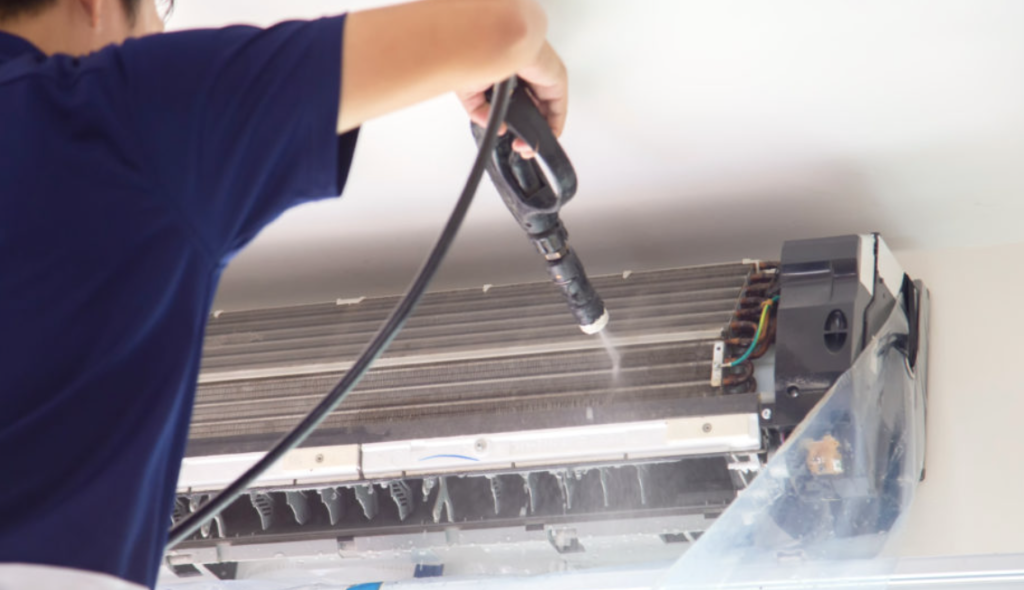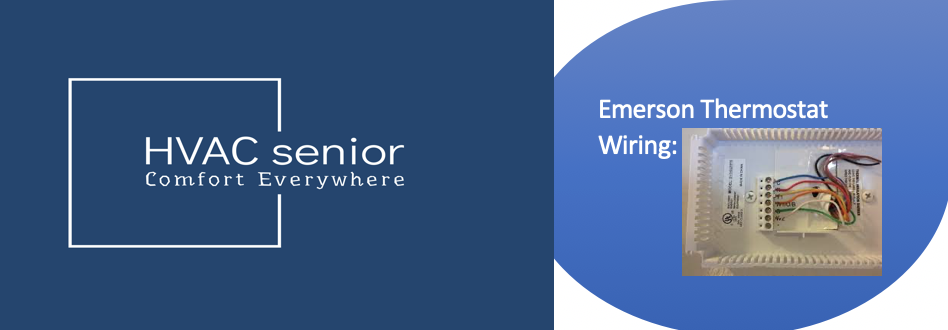Exploring the Disadvantages of Mini Split Systems.
Mini-split systems, also known as ductless air conditioning and heating systems, have gained popularity for their energy efficiency and flexibility in providing climate control in homes and small commercial spaces.
These systems offer numerous advantages, such as zoned cooling and heating, ease of installation, and improved energy efficiency. However, like any technology, mini-split systems are not without their disadvantages.
At a glance: Disadvantages of Mini Split Systems includes Upfront Cost,Installation cost,Aesthetics,Limited Range,Maintenance and Cleaning,Cooling Capacity and Noise Level.
In this post, we will delve into some of the key drawbacks associated with mini-split systems, shedding light on the factors that may influence a decision to choose alternative HVAC solutions or to address these limitations effectively.
Understanding these disadvantages is crucial for making informed decisions when it comes to heating and cooling solutions for various environments.
1.Upfront Cost.

One of the primary disadvantages of mini-split systems lies in their higher upfront cost when compared to traditional central air conditioning systems or window units.
This cost encompasses not only the purchase of the indoor and outdoor units but also the installation process, which can involve specialized labor and materials.
The need for a qualified technician to install the system can drive up the initial expenditure.
However, it’s important to note that while the upfront cost may be a deterrent, it’s not the whole picture. Mini-split systems can significantly offset this initial investment in several ways.
One of the key advantages of mini-splits is their energy efficiency. By providing zoned heating and cooling, these systems allow you to target specific areas of your home, rather than conditioning the entire space.
This can lead to substantial energy savings over time, as you’re not wasting energy on unused rooms or spaces. In the case of larger homes or buildings, you can achieve even more substantial savings by only heating or cooling the rooms that are actively in use.
Moreover, mini-splits often come equipped with advanced features such as inverter technology, which can modulate the system’s capacity to match the specific cooling or heating needs at any given moment.
This ensures efficient operation and lower energy bills in the long run. Additionally, some governments and utility companies offer incentives or rebates to encourage the installation of energy-efficient HVAC systems, which can help offset the initial cost.
While the upfront expense may be a concern, it’s important to consider the potential long-term financial benefits and energy savings that a mini-split system can offer.
When you weigh these factors against the initial investment, the decision to invest in a mini-split system becomes more balanced and financially appealing, particularly if you have a clear plan for optimizing its use in your home or space.
Also read>>>>Smallest Mini Split.
2.Professional Installation.

Another notable disadvantage of mini-split systems is the necessity for professional installation. While the installation process is generally simpler and less invasive than adding ductwork for a central HVAC system, it still demands the expertise of a qualified technician.
This professional installation is vital to ensure that the refrigerant lines and electrical connections are correctly and safely installed, as well as properly sized to optimize the system’s performance.
Improper installation can have various negative consequences. Inefficient installation can lead to reduced energy efficiency, which essentially nullifies one of the primary advantages of mini-split systems.
Moreover, a poorly installed system may suffer from a shorter lifespan, which can be a frustrating and costly outcome.
Furthermore, many manufacturers require professional installation to maintain the warranty on the system. If you attempt a DIY installation or hire an unqualified technician, you risk voiding any warranty coverage, leaving you vulnerable to unexpected repair or replacement costs.
It’s worth noting that some mini-split systems come with pre-charged refrigerant lines, which can simplify the installation process.
However, even with this feature, specific requirements must be met to ensure a successful and efficient installation.
Therefore, while the overall installation process is typically less invasive and complex than that of traditional central HVAC systems, it is crucial to prioritize professional installation to ensure the system’s optimal performance and longevity.
The expertise of a trained technician not only safeguards your investment but also guarantees that you fully reap the benefits of your mini-split system in terms of comfort and energy savings.
3.Aesthetics.
The aesthetics of mini-split systems present another noteworthy disadvantage. While the indoor units of mini-splits are compact and offer a degree of flexibility in terms of placement, they still require visible installation within the spaces they serve.
The various options available, such as wall-mounted, floor-mounted, or ceiling cassette units, are all noticeable to the occupants.
It’s important to acknowledge that some newer models are designed with a sleek and modern appearance, which can blend more seamlessly with different interior designs and decor.
However, some homeowners may find the appearance of these indoor units less aesthetically pleasing when compared to traditional central air conditioning systems.
In central systems, the ductwork is concealed within walls or ceilings, making the HVAC system virtually invisible. This design element often appeals to those who prioritize a clean and uncluttered look in their living spaces.
For individuals who prefer a more discreet look, mini-split systems do offer indoor units that can be concealed. These concealed versions are designed to be installed in spaces like closets or false ceilings, effectively hiding the unit from view.
However, it’s important to note that creating the necessary space for concealed units can be a significant undertaking, as it may involve remodeling or redesigning parts of your home or building. This can add to the overall cost and complexity of the installation.
Also read>>>>Smallest portable air conditioner.
4.Limited Range.
An additional disadvantage of mini-split systems stems from the constraints imposed by the maximum allowable distance between the outdoor and indoor units.
This limitation is primarily due to the length constraints of the refrigerant lines that connect the two components.
As a result, it can impose certain restrictions on the placement options and can pose challenges in the installation process, particularly in larger homes or buildings with complex layouts.
The specific distance requirements for the refrigerant lines can vary depending on the manufacturer and model of the mini-split system.
It is crucial to thoroughly review the manufacturer’s literature to understand the maximum pipe lengths and other installation guidelines. Exceeding these recommended lengths can have detrimental effects on the system’s performance.
When the distance between the indoor and outdoor units is extended beyond the manufacturer’s specifications, the system may experience a reduction in its cooling or heating capacity.
This phenomenon is known as “derating,” and it results in the unit’s inability to deliver the full range of cooling or heating that it is designed for.
This limitation can be especially problematic in situations where the indoor and outdoor units must be placed at a considerable distance from each other.
It may necessitate creative or unconventional installation methods, such as the use of longer refrigerant lines, which can introduce additional complexity and cost to the installation process.
5.Maintenance and Cleaning.

Ductless mini-split systems come with the obligation of regular maintenance, which includes cleaning the filters and coils. Neglecting this essential upkeep can lead to a gradual reduction in the system’s efficiency and overall performance.
Over time, dust, dirt, and debris can accumulate in the indoor unit’s filters and coils, hindering the system’s ability to effectively cool or heat the space. This, in turn, may result in increased energy consumption and higher utility bills as the system struggles to maintain the desired temperature.
Moreover, the filters in mini-split systems may need periodic replacement, which adds to the ongoing maintenance costs.
Dirty or clogged filters not only compromise indoor air quality but also put additional strain on the system, potentially leading to more frequent breakdowns and costly repairs.
It’s important to note that the frequency of filter replacement can vary depending on factors such as the system’s usage, the quality of the indoor air, and the specific model of the mini-split.
While this maintenance requirement is common to virtually all forms of air conditioning systems, it is a crucial consideration when evaluating the drawbacks of mini-split systems.
Neglecting maintenance not only impacts their efficiency but can also result in a shorter system lifespan, which can be a substantial financial burden. Regular maintenance is essential to keep any air conditioning system operating properly and at its peak rated capacity.
Also read>>>>Smallest Ductless Mini Split.
6.Cooling Capacity.
Another important consideration when it comes to the disadvantages of mini-split systems is their cooling capacity, which is typically designed for individual rooms or specific zones rather than being suitable for cooling an entire house or a large space.
While these systems excel in zoned heating and cooling, they may not be the most practical choice for properties with extensive cooling needs.
For larger spaces or homes with multiple rooms requiring simultaneous cooling, installing multiple indoor units may become necessary.
This approach, while feasible, can substantially increase the upfront cost of the system. Each additional indoor unit requires its own set of equipment, which includes the indoor air handler, refrigerant lines, and necessary electrical connections.
As a result, the overall installation cost and complexity can escalate, potentially making mini-splits less cost-effective for whole-home cooling solutions.
Manufacturers of mini-split systems do offer models that allow for multiple indoor units to be connected to a single outdoor unit.
Some systems can accommodate up to nine zones with one outdoor unit, offering a practical solution for properties with diverse cooling needs.
However, it’s essential to keep in mind that the costs associated with these larger and more complex installations can add up, and proper sizing and design are crucial to ensure efficient cooling in each zone.
Also read: Mini Split Heat Pump
7.Noise Level.
Another factor to consider when evaluating the disadvantages of mini-split systems is their noise level. While mini-splits are generally quieter compared to window units or some older air conditioning systems, they are not completely silent.
The extent of noise can vary depending on the specific brand and model of the system, so it’s essential to take into account the decibel ratings when noise is a significant concern.
Mini-split systems typically feature multiple fan speeds, which can be adjusted to mitigate sound levels.
The lower fan speeds tend to produce less noise, making them suitable for use during quieter hours or in spaces where noise reduction is a priority.
Additionally, some models are engineered with noise-reducing features and advanced technology to minimize operational sound, enhancing overall comfort for occupants.
It’s important to note that the noise generated by mini-split systems is often a soft hum or whooshing sound from the indoor unit’s fan and the outdoor compressor, rather than the disruptive noise associated with older window air conditioners.
However, if noise sensitivity is a major consideration, you should consult the manufacturer’s specifications and product reviews to select a model that aligns with your acoustic preferences.
Also read>>>>Gree Mini Split Troubleshooting.
Frequently Asked Questions (FAQs).
What is the primary disadvantage of mini-split systems?
The primary disadvantage of mini-split systems is their higher upfront cost compared to traditional central air conditioning systems or window units.
This cost includes the purchase and installation of both the indoor and outdoor units. However, the long-term energy savings and other benefits can offset this initial investment, especially if you are only cooling or heating specific rooms or zones.
Are mini-split systems easy to install on your own?
Mini-split systems require professional installation. The refrigerant lines and electrical connections must be correctly and properly sized for optimal performance.
Improper installation can lead to inefficiencies, a reduced system lifespan, or even void the warranty. While there are pre-charged refrigerant line options, certain requirements must be met for successful installation.
Can mini-split systems be aesthetically integrated into a home’s interior?
Mini-split systems, while compact and flexible in placement, still require visible installation. Some homeowners may find the appearance of the indoor units less aesthetically pleasing compared to central air conditioning systems, where ducts are concealed.
However, concealed indoor units are available, though they may require additional space and planning for installation.
What are the limitations of mini-split systems in terms of cooling capacity?
Mini-split systems are typically designed for cooling individual rooms or specific zones, rather than an entire house.
For larger spaces or multiple rooms that require simultaneous cooling, you may need to install multiple indoor units, which can increase the upfront cost.
Some manufacturers offer systems that can accommodate multiple indoor units connected to a single outdoor unit, but this may still add to the overall installation cost and complexity.
Proper sizing and design are essential to ensure efficient cooling in each zone.
How noisy are mini-split systems, and can the noise be reduced?
Mini-split systems are generally quieter compared to window units and some older air conditioning systems. The noise level can vary depending on the brand and model.
Most mini-split systems offer multiple fan speeds that can be adjusted to mitigate sound levels. Lower fan speeds tend to produce less noise.
Noise-reducing features and advanced technology are available in some models to minimize operational sound and enhance overall comfort.
If noise sensitivity is a concern, consult the manufacturer’s specifications and product reviews to select a model that aligns with your acoustic preferences.
Watch more:
Conclusion
Mini-split systems offer numerous benefits, such as zoned heating and cooling and energy efficiency. However, they are not without their disadvantages.
The upfront cost, professional installation requirement, aesthetics, cooling capacity limitations, and potential noise levels are all factors to consider when evaluating whether mini-splits are the right choice for your home or space.
It’s crucial to weigh these drawbacks against the system’s advantages, such as energy savings and flexibility.
Proper planning, maintenance, and the selection of the right model can help mitigate these issues and ensure that you make an informed decision about whether a mini-split system is the ideal HVAC solution for your specific needs.









